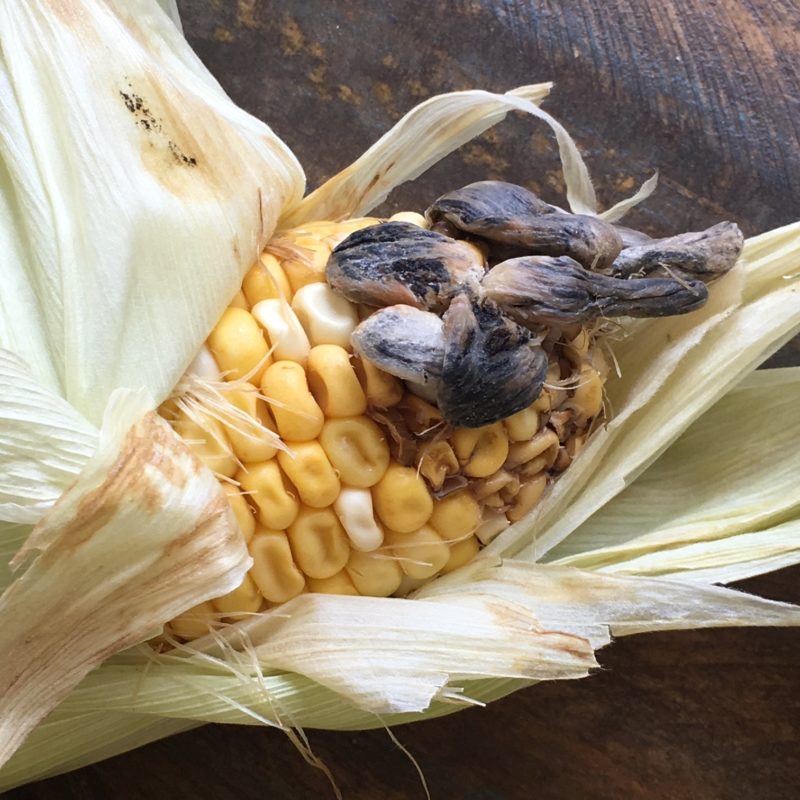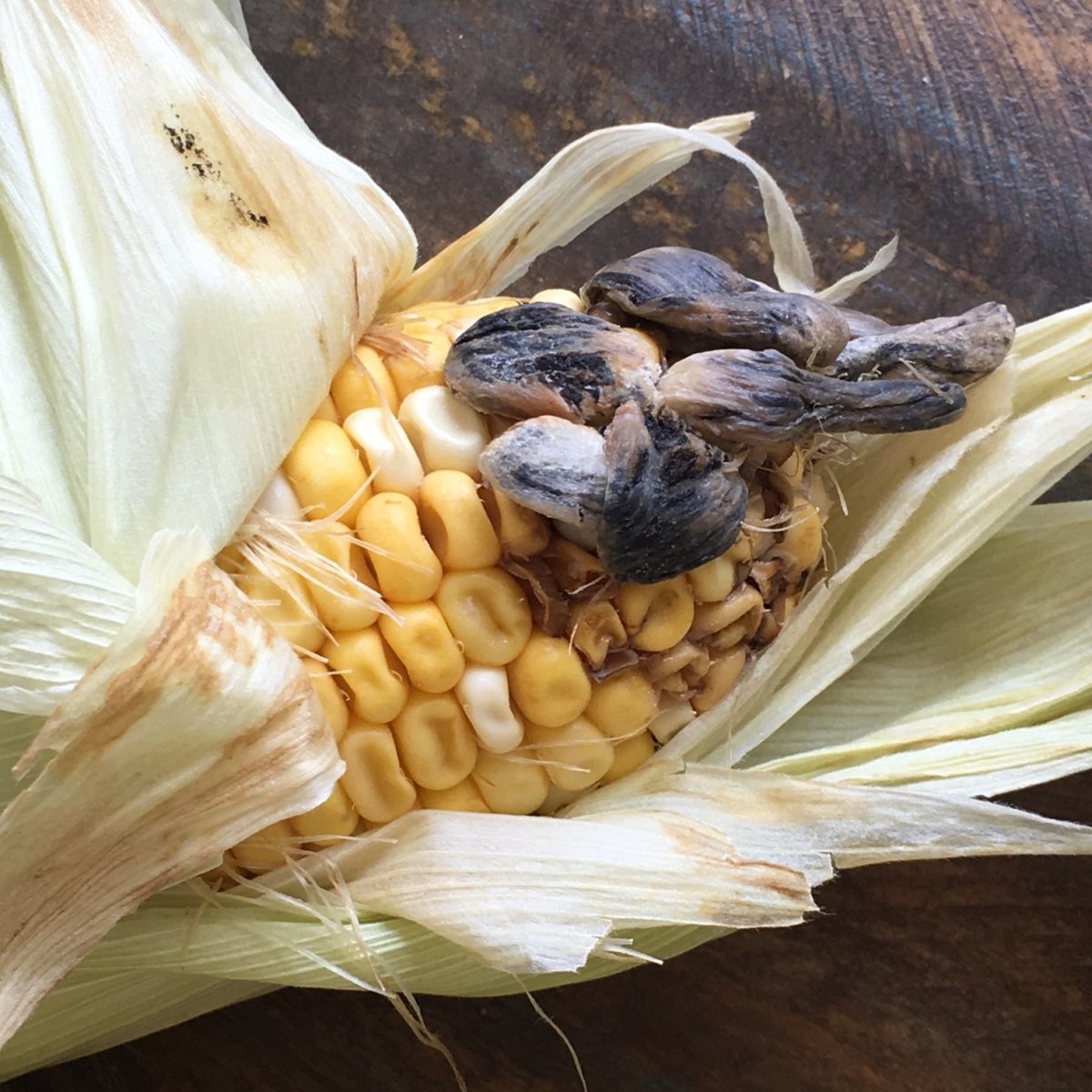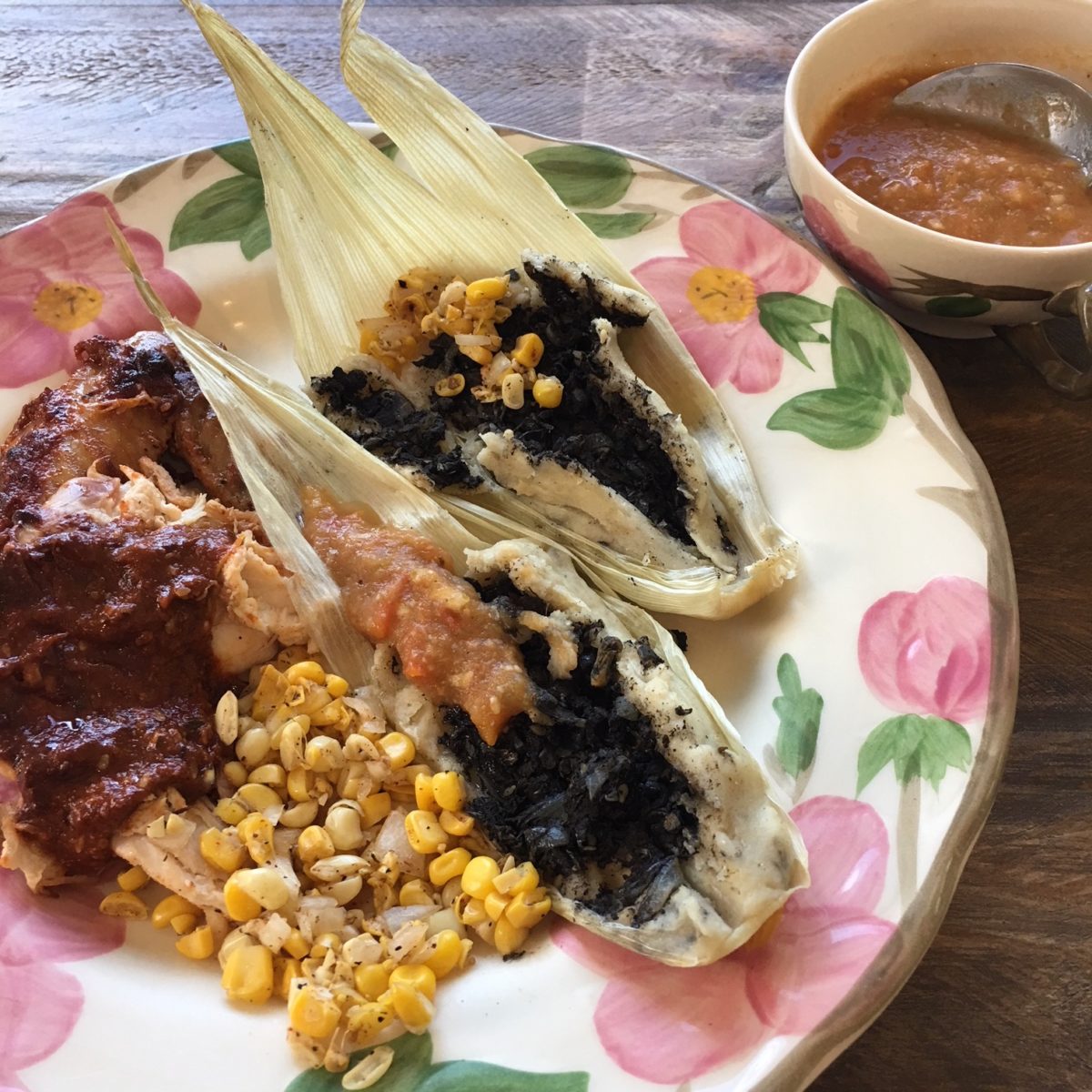Huitlacoche: Invite Corn Fungus To The Plate

This time of year, a unique delicacy sprouts to life from corn fields. Its Aztec name is cuitlacoche (pronounced QUEET-la-coh-chay). Referred to as “corn smut”, farmers in central Mexico call it “el oro negro” or “back gold.” Gathered during the rainy season from now through mid-October, huitlacoche has long been considered a delicacy.
Here in the U.S., huitlacoche first gained national attention in 1989, when Chef Josefina Howard served a celebrated huitlacoche feast at the James Beard House in New York City. The fungus—which some say has an earthy, tangy, mushroom-like flavor with a hint of raw corn—is a popular ingredient in soups and quesadillas. Huitlacoche is often prepared simply, with the Mexican herb epazote, onion and chili pepper. In Mexico’s corn-loving culture, the quasi-mushroom also provides nutrition: high amounts of the essential amino acid lysine that’s absent in corn, as well as lots of fiber and protein. Together, corn and huitlacoche make a complete protein meal.
A fungus called Ustilago maydis, literally transforms each corn kernel into a bulbous, bulging bluish-grey gall. It is naturally present in the soil and can be lofted easily into the air and onto plants. The fungus grows inside corn husks and flourishes when droplets of rain seep into a stalk of corn and infects the kernels. Huitlacoche is picked when firm but spongy, sort of like a foamy popcorn. Farmers usually wade through 40 or more stalks of corn before finding something.
Thank you to the Tucson CSA who provided me a special opportunity to experience and share this natural life cycle of corn.
References:
NPR: Scourge Not More: Chefs Invite Corn Fungus to the Plate NPR: In Mexico, Tar-Like Fungus Considered Delicacy

